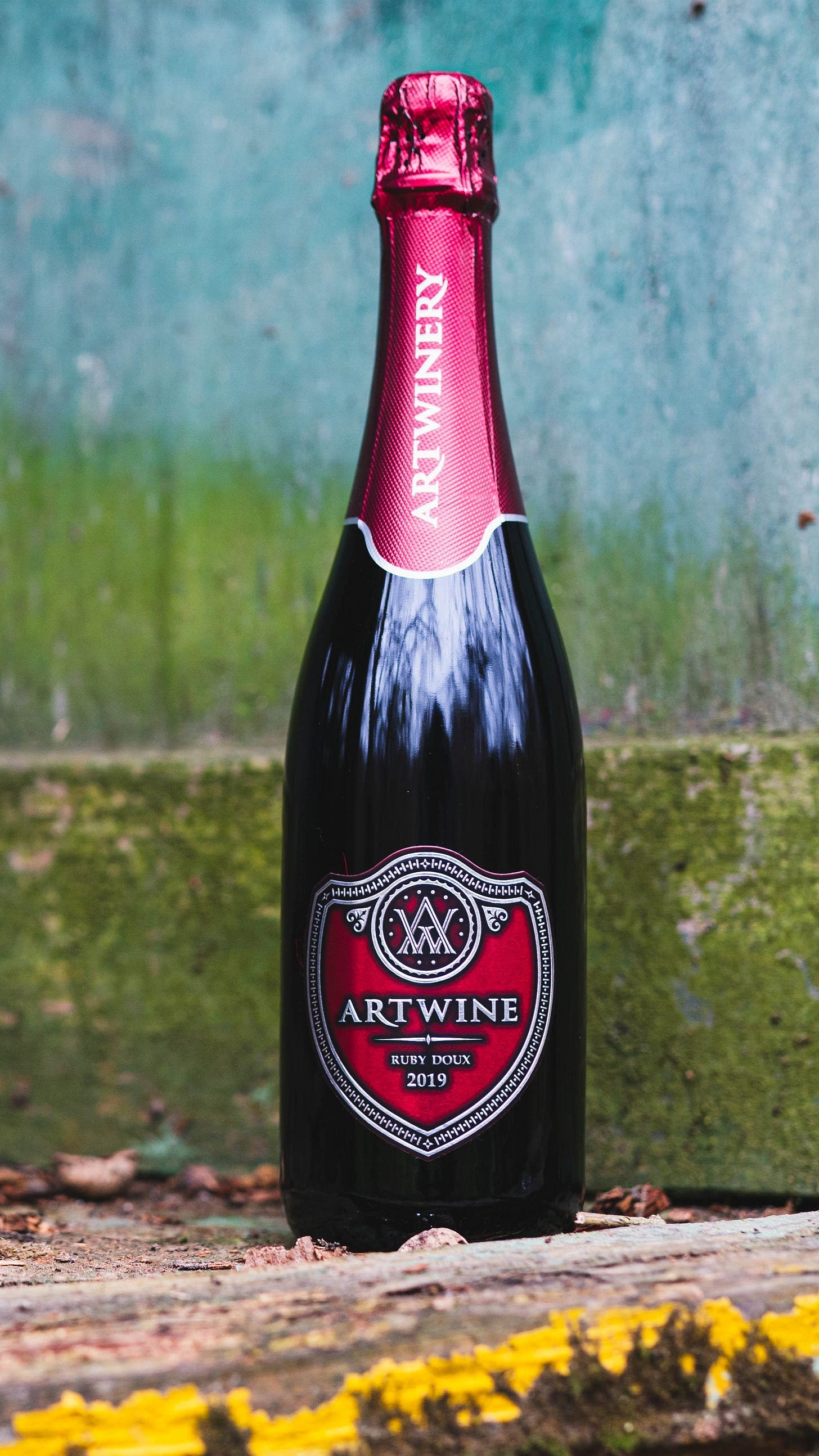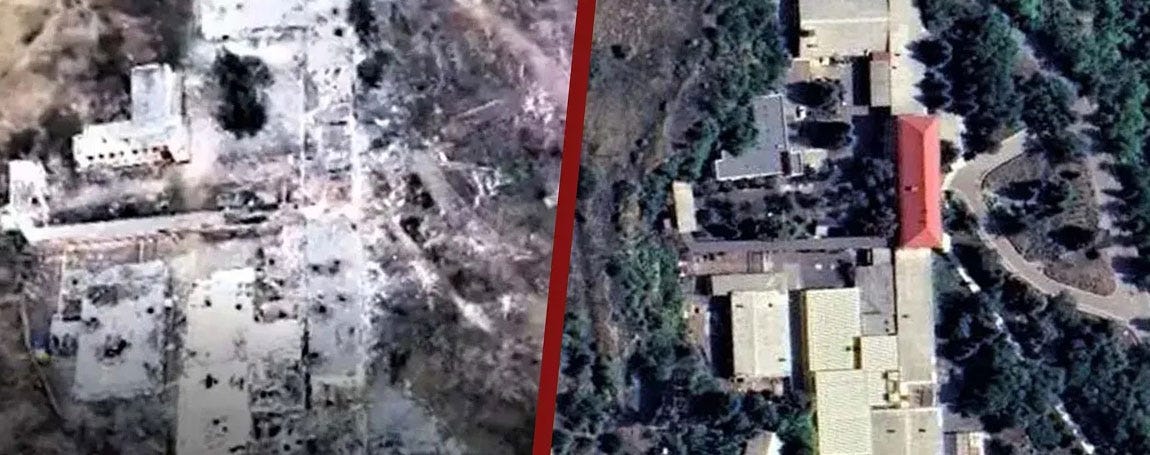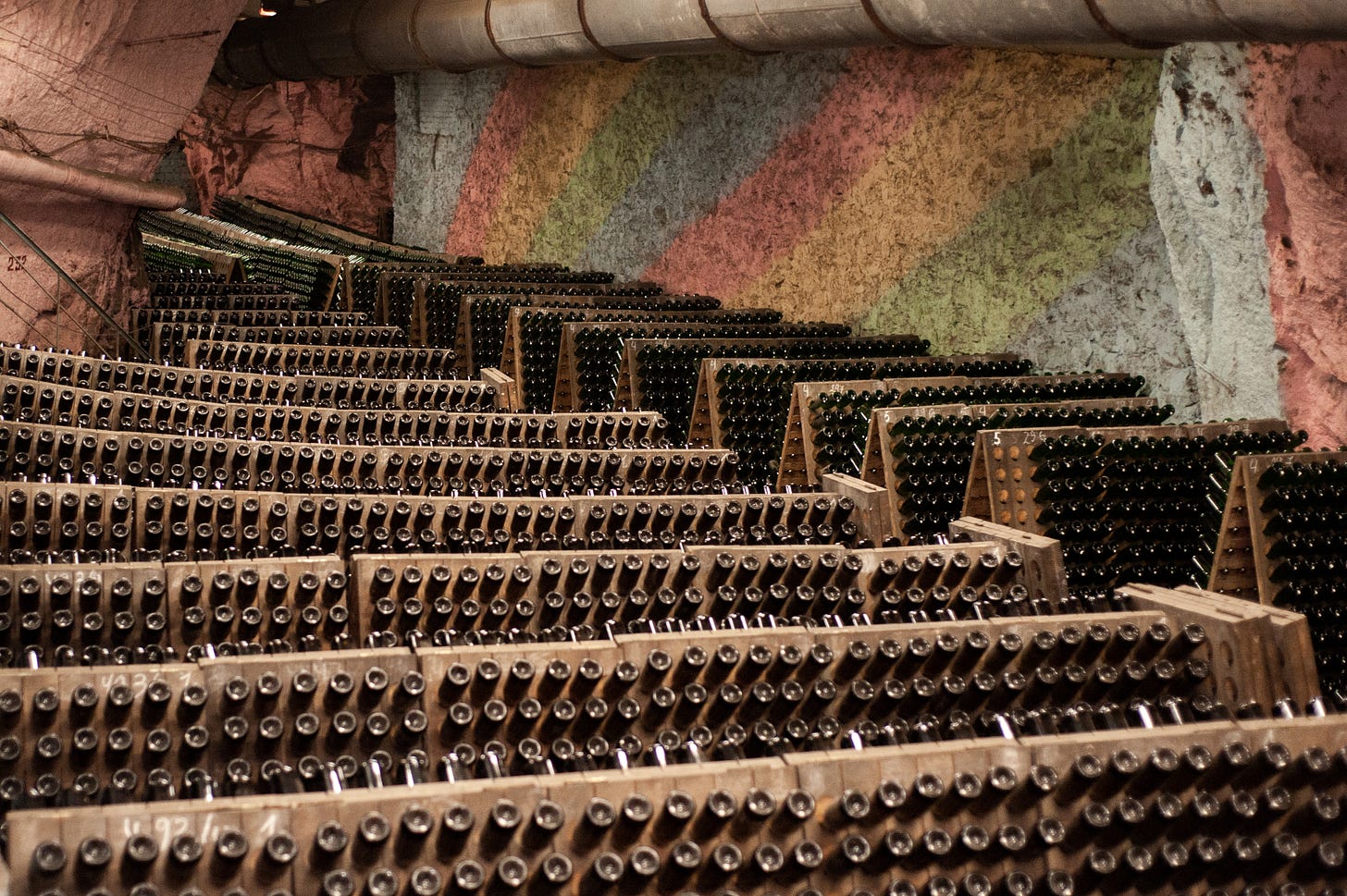The Battle for Bakhmut's Wine
A Sparkling Symbol of Ukraine's Culture, Smuggled Out Under Fire
In May 2022, I attended the inaugural Saperavi Festival, organized by a group called Saperica that was dedicated to promoting Saperavi, the best known red wine grape of Georgia and Ukraine. The event was held at the Dr. Konstantin Frank winery in New York’s Finger Lakes, a fitting setting as Frank had come to this country from Odesa and was the first to plant Saperavi in the United States.
At one point I slipped out of the seminar (it was on a sunny, open terrace in 90-plus degree heat, which only makes Eastern European accents heavier) to visit the tent being set up for a public tasting that afternoon. There I met Gayle Corrigan, who offered me a taste of two Ukrainian sparkling wines. One of these, a 2013 vintage, could never be made again, she explained, as the grapes were grown in Crimea and the vineyards were destroyed after Russia annexed that region in early 2014.
As we spoke on that sweltering day near Keuka Lake and I contemplated jumping into that ice bucket with those bottles, Russia’s full-scale invasion of Ukraine was less than three months underway. Russian troops were just beginning their tenacious assault on the eastern city of Bakhmut, the home, as it happened, of the winery Corrigan was representing.
Recently, after writing about Shabo winery in western Ukraine, I re-connected with Corrigan, who represents a few Ukrainian wineries through her company, Brave Selections, based in Pawtucket, Rhode Island. She told me a moving story of one of those wineries and how it has fared during the war. A book will need to be written at some point, similar to Don and Petie Kladstrup’s Wine & War: The French, the Nazis, and the Battle for France’s Greatest Treasure (2002).
The winery now known as Artwinery was founded in the early 1950s when Cold War sanctions prevented the Soviet Union from importing Champagne. Deprived of his favorite tipple, Josef Stalin decided the Soviets could make their own and sent some people looking for a suitable place to establish a sparkling wine facility. They found an abandoned 19th-century gypsum mine in Ukraine near the city now known as Bakhmut. The mine was 236 feet underground and extended for about a kilometer, much like the chalk cellars of Champagne. So for four decades, the winery produced Sovietskoye Shampanskoye, using grapes grown further south in Crimea, where vineyards had been re-established after the Crimean War in the 1870s.
After the USSR collapsed and Ukraine became independent in 1991, the winery marketed its product under the brands Artemivske and Krim. In 2007, French consultants helped modernize the cellars and the production equipment.

When the Russian invasion of Crimea in 2014 cut Artwinery off from its vineyard sources, it continued production using grapes from Odesa and other regions in western Ukraine. But then Russia’s full-scale invasion in 2022 brought the war to the winery itself, and Bakhmut became the scene of the hardest fought, bloodiest battle in Europe since World War II.
If you’ve followed news of the Ukraine war, you’ll recall the assault on Bakhmut was led by Yevgeny Prigozhin, leader of the Wagner mercenary force, on behalf of the Russian army. Corrigan told me that reputedly, Putin had promised Prigozhin the winery, its equipment and its wines as part of his booty for taking the city. So for a while, the winery itself was spared the onslaught, though eventually its above-ground facilities suffered the same fate as the rest of the city.

To say the least, the battle presented unique challenges to getting the wine to market. As Russian and Wagner forces inexorably tightened their grip on the city, Corrigan said, winery staff were able to move about 300,000 bottles from the gypsum mine and smuggle them out of Bakhmut a little at a time, often under protection of Ukrainian forces. Some were sent to Corrigan, and some to Japan. The rest was kept for the domestic Ukraine market.
Bakhmut fell to Russian forces in May 2023. Prigozhin never got his bounty: He met his end in a plane crash shortly after leading his troops on an ill-fated revolt against Moscow. Artwinery is now abandoned, its above ground facilities destroyed. The Russians took as much equipment as they could haul away, but there may be as many as 6 million bottles still aging on their lees in the gypsum cellars, Corrigan says.

Corrigan now has about 1,400 bottles remaining of pre-2014 wine, the bubbly made from Crimean grapes, which she mostly donates to charities raising money for Ukraine. She also has more than 15,000 of more recent vintages that were smuggled out of Bakhmut during the fighting. Those she is selling through distribution and on the internet at Artwine.com and BraveSelections.com.
As for Bakhmut, “there’s nothing left,” she said.
Other reading:
Shabo: Wines of Resilience from Ukraine
Don’t get me started on Ukraine. I studied international relations in college and gradual school (where I gradually decided I didn’t want to go to school anymore), specifically U.S.-Soviet-China relations. So I know enough to remain interested in these issues, even though life took me along a different path. I don’t lord it in dinner conversations, beca…




Thank you for writing this, Dave. Stories like Artwinery’s remind us that wine is never just about place—it’s about people, history, and the will to endure. You’ve captured that intersection so clearly. The idea that production continued, even after displacement, speaks volumes about how deeply wine is tied to cultural identity. A powerful and necessary piece.
I’ve read “Wine and War” and it is a terrific read about the French and their efforts to save the industry from the Nazis during WW II.